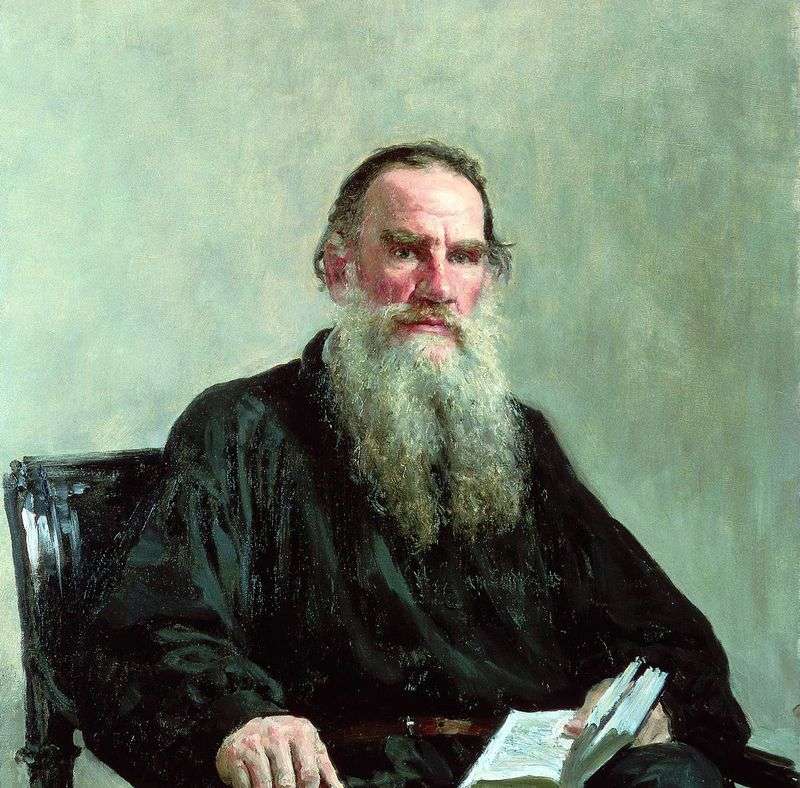
L. N. Tolstoy Repin wrote several times. But the most successful of all turned out to be a portrait, painted in 1887, in Yasnaya Polyana, in just three days. This portrait belongs to the best portraits of Tolstoy and is very popular.
The writer is depicted sitting in a chair, with a book in his hand. It seems that he just turned away from his lesson for a minute and is about to plunge into reading again. The artist captured Tolstoy with simplicity and naturalness, without the slightest posing. The pose of the writer is very easy.
Strict, penetrating eyes, shaggy, angry frowning eyebrows, a high forehead with a sharply draped fold – everything reveals in Tolstoy a deep thinker and observer of life with his sincere protest against all lies and falsity. With great plasticity, Tolstoy’s face is written, especially his forehead. The scattered light falling on the face reveals the bumpy bulge of this large forehead, emphasizes the shade of deep-set eyes, which from this become more severe, stricter.
Revealing the character of the writer, emphasizing its importance in society, however, Repin does not idealize Tolstoy, does not try to surround him with an aura of exclusivity. The whole appearance of Tolstoy, the manner of keeping pointedly simple, ordinary, ordinary, and at the same time deeply informative, individual. A purely Russian face, rather a peasant than an aristocrat barina, ugly, with irregular features, but very significant, clever; a fit proportional figure in which the peculiar grace and free naturalness of a well-educated person peeps through – such is the characteristic of Tolstoy’s appearance, which makes him different from anyone else.
The portrait is written in a very restrained, strict silver-black gamut: a black blouse with a soft fold, a black polished chair with a silver-white glare of light on it, white sheets of an open book that are slightly rough in texture. And only the face and partly hands are pulled out of this general tone.
Looking at Tolstoy’s face, at his heavy, overworked hands, one involuntarily imagines him not only at his desk, with a book in his hands, but also in the field, behind a plow, in hard work.
 L. N. Tolstoy on vacation in the forest by Ilya Repin
L. N. Tolstoy on vacation in the forest by Ilya Repin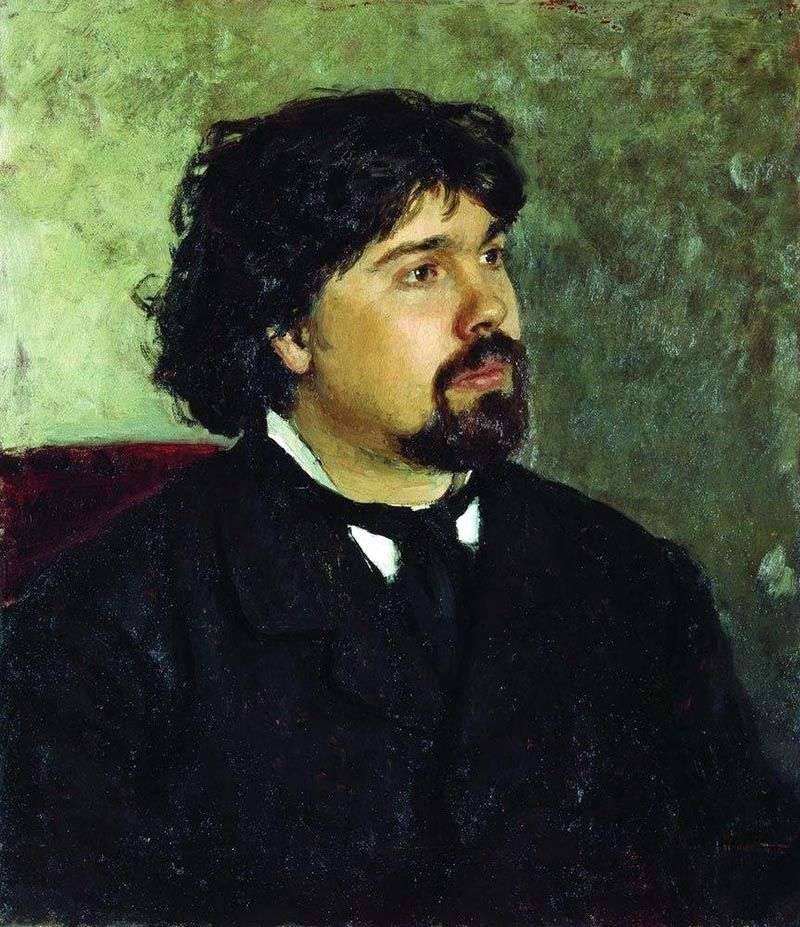 Portrait of V. S. Surikov by Ilya Repin
Portrait of V. S. Surikov by Ilya Repin Plowman. Leo Tolstoy on arable land by Ilya Repin
Plowman. Leo Tolstoy on arable land by Ilya Repin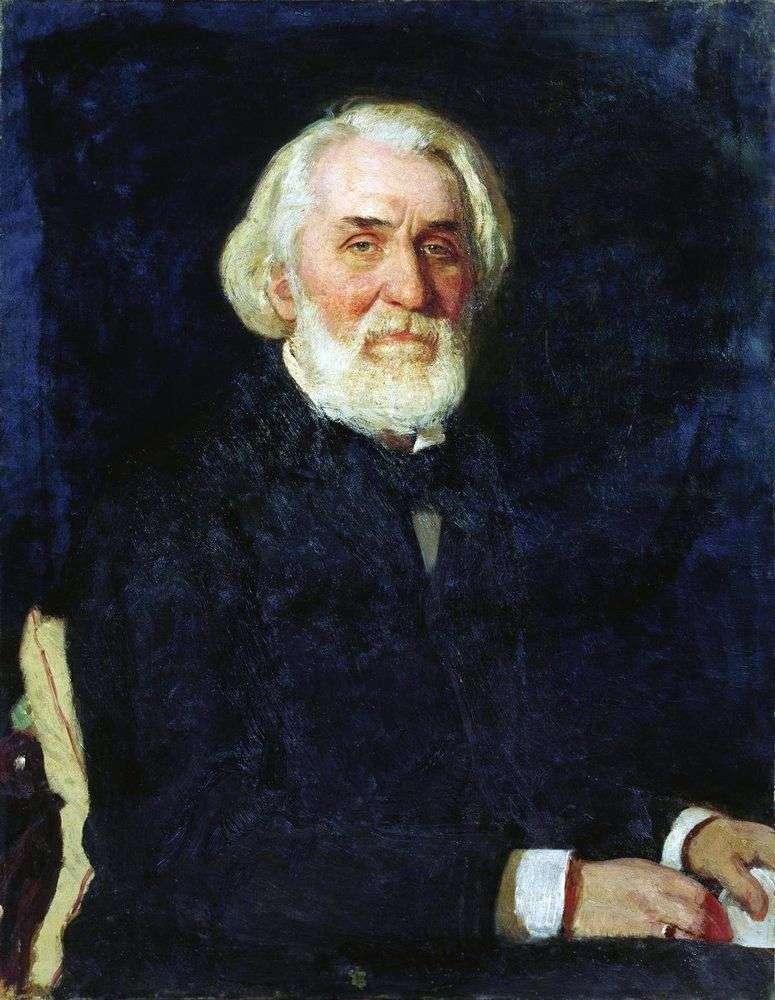 Turgenev by Ilya Repin
Turgenev by Ilya Repin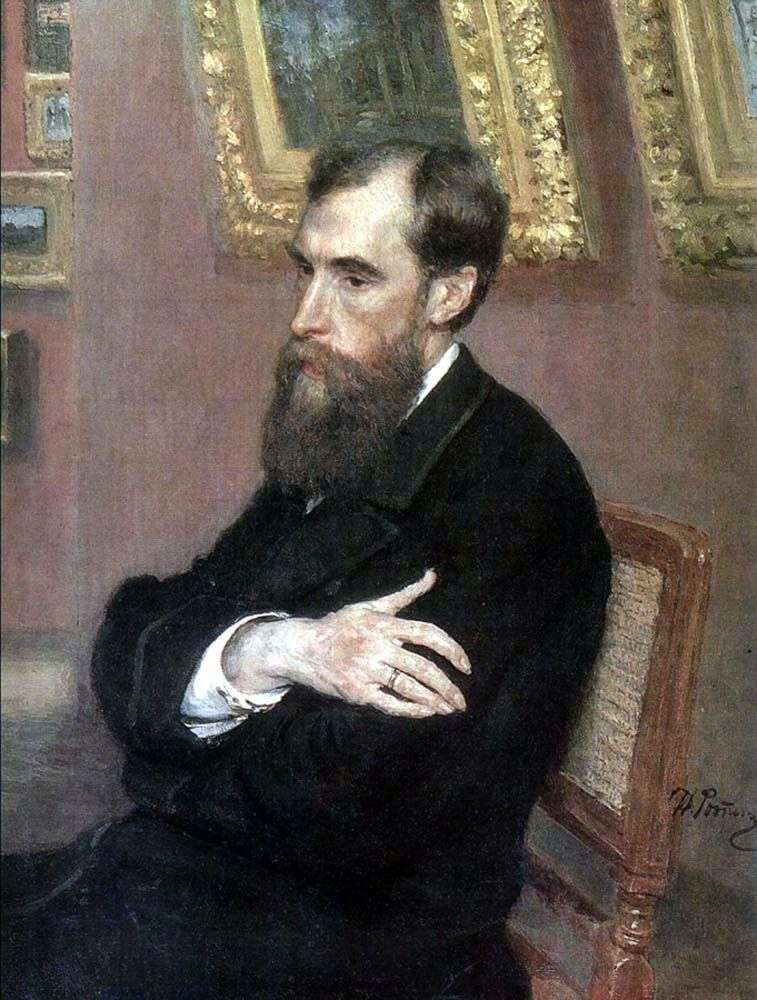 Portrait of P. M. Tretyakov by Ilya Repin
Portrait of P. M. Tretyakov by Ilya Repin Pavel Mikhailovich Tretyakov by Ilya Repin
Pavel Mikhailovich Tretyakov by Ilya Repin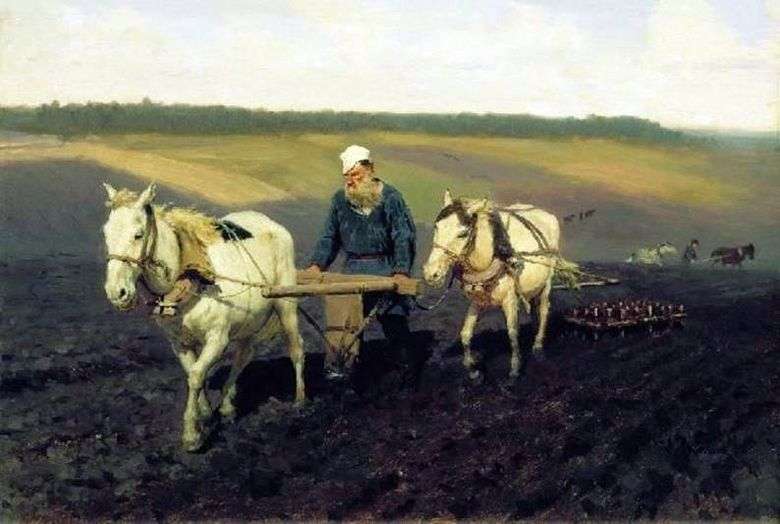 Plowman Leo Tolstoy en tierra arable – Ilya Repin
Plowman Leo Tolstoy en tierra arable – Ilya Repin Portrait of N. I. Pirogov by Ilya Repin
Portrait of N. I. Pirogov by Ilya Repin